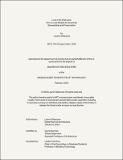Love in the Fast Lane: Not-so-new Models for American Stewardship and Preservation
Author(s)
Gideonse, Lauren
DownloadThesis PDF (97.56Mb)
Advisor
Norman, Carrie
Terms of use
Metadata
Show full item recordAbstract
From 1914 to 1919 American Portland Cement funded the construction of eight mile-long stretches of paved road across the Midwest, seedling miles, as part of the campaign to garner support for the Lincoln Highway project. In internal memoranda, the company called these seedlings “object lessons.” The seedlings, by creating a physical encounter of the space between the status quo and what could be, manufactured a desire in drivers. The incredibly successful campaign shifted responsibility for the road system to the public domain and cemented the road as a site of civic investment. It also invented a mode of experience that facilitates noticing but is not in response to failure or crisis.
This thesis begins with one hundred and fifty sites across the United States – domestic buildings that are particularly old for their context – documented through two road trips. The road-trip as collection mechanism sets the terms: the road and the house are considered together. They inform and contextualize each other. The road is both a critical contemporary network of resources and people, and the historical agent of rationalizing, mobilizing, and capitalizing on the American landscape. The historic home is not considered in a vacuum but always in time, in relationship to the landscape and through its frontage. By looking carefully at these sites through tailored analytical tools, this thesis identifies tendencies, both at the time of construction and in the behavior of the buildings since, that reflect an alternate set of values from those that shape building and preservation practices today.
From these sites the thesis composes, and in the process re-evaluates, the history of a house and the road. The objects of this research form ulterior narratives – derivative and projective – that cast an ill-fated romance between forms of stewardship and systems of capital. The results, a collection of slow media, construct and reconstruct encounters with an altered landscape. Like the seedling miles from which the contemporary American highway system grew, this thesis utilizes the “object lesson” as a mechanism to prompt reconsideration. The thesis puts forward a new stretch of seedling road to manufacture a desire for not-so-new forms of stewardship and preservation that are both born-of and particular-to the American context.
Date issued
2024-02Department
Massachusetts Institute of Technology. Department of ArchitecturePublisher
Massachusetts Institute of Technology